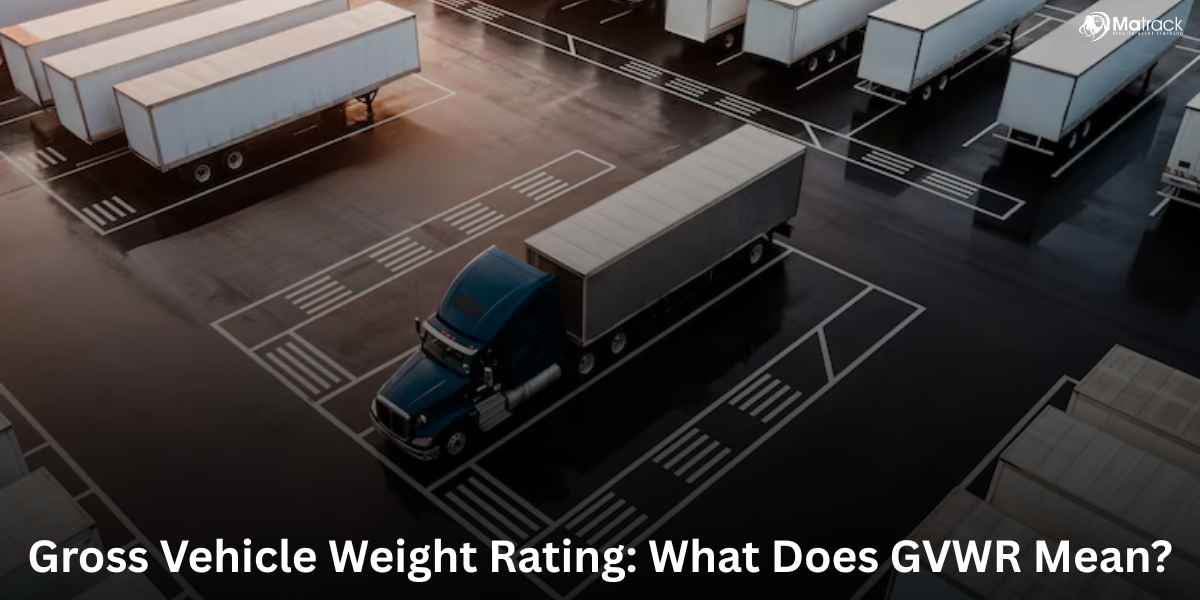Key Takeaways:
- GVWR sets the safe weight limit a vehicle can carry, combining its own weight with passengers, cargo, and fuel.
- This limit is based on how much load the frame, axles, suspension, brakes, and powertrain can support without failure.
- Operating above GVWR increases the chance of accidents, shortens equipment life, and leads to legal penalties.
- Knowing GVWR helps manage towing properly by balancing trailer weight, tongue load, and overall load distribution.
What Is GVWR?
GVWR stands for Gross Vehicle Weight Rating. It shows the maximum weight a vehicle can carry when fully loaded with people, cargo, fuel, and factory-installed accessories.
This weight limit is set by the manufacturer. It helps ensure the vehicle stays safe and stable under normal driving conditions.
What Components Included In GVWR?
GVWR includes the full weight that rests directly on the vehicle’s frame. This total combines everything the vehicle supports while it’s in motion or at rest. Below are the key components that make up this rating:
Curb Weight
Curb weight is the weight of the vehicle itself, including engine fluids, oil, and a full tank of fuel. It does not include any passengers or cargo.
Occupants
This includes the combined body weight of the driver and all passengers seated in the vehicle. Every person adds to the total load the vehicle must carry.
Payload
Payload refers to the total weight of everything loaded into the vehicle. This includes tools, equipment, groceries, luggage, or anything else being transported.
Aftermarket Parts
Permanent add-ons like toolboxes, roof racks, bed liners, or other accessories also count toward GVWR. If it stays installed and adds weight, it’s part of the total.
Hitch Tongue Weight
If the vehicle is towing a trailer, the tongue weight that presses down on the hitch is included in the GVWR. This is the only part of the trailer weight that gets added to the towing vehicle’s GVWR.
How Is Gross Vehicle Weight Rating Calculated?
Manufacturers calculate GVWR by measuring the load limits of the frame, suspension, axles, brakes, tires, and powertrain. The part with the lowest weight capacity sets the maximum rating.
Each component is tested under full-load conditions to confirm structural and mechanical limits. The combined capacity defines how much weight the vehicle can carry safely.
GVWR is printed on the certification label placed on the door frame. This value remains fixed and cannot be changed legally after production.
Why Is GVWR Important?
Gross Vehicle Weight Rating sets the safe operating limit for any load-bearing vehicle. Respecting this threshold avoids structural stress, safety hazards, and legal trouble.
Protects Road Stability
Maintaining the rated weight ensures smooth control during turns, stops, and sudden maneuvers. It prevents instability that often leads to rollovers or loss of control.
Extends Equipment Life
Consistent overloading shortens the lifespan of tires, suspension, and braking systems. Staying within the limit preserves their condition and performance.
Avoids Penalties
Excess weight can trigger citations, impoundment, or license issues during inspections. Vehicles must meet the rated criteria to operate lawfully.
Reduces Downtime
Minimized strain on key parts results in fewer breakdowns and lower maintenance costs. Efficient loading supports reliable use over time.
Enhances Traffic Safety
Vehicles within safe weight ranges react predictably in emergencies. That stability reduces the risk posed to other drivers on the road.
Curb Weight Vs Gross Weight
| Curb Weight | Gross Vehicle Weight (GVW) |
| Weight of the empty vehicle with fluids and fuel | Actual weight of the vehicle when fully loaded |
| Engine oil, coolant, transmission fluid, full tank | Curb weight + passengers + cargo + tongue weight |
| Passengers, cargo, trailer tongue weight | Nothing excluded if it rests on the chassis |
| At the factory or showroom condition | At any time during use with load |
| Remains constant unless modified | Varies depending on load carried |
| Used to calculate payload capacity | Used to check if total weight stays within GVWR |
Related: What Are The Differences Between Curb Weight vs Gross Weight
Vehicle Towing Capacity
Towing capacity defines how much weight a vehicle can safely pull behind it. This rating depends on engine power, axle ratio, transmission strength, and structural design.
- Towing Capacity: Indicates the maximum trailer weight the vehicle can tow without risk of damage or instability.
- Tongue Weight: Refers to the downward force the trailer applies to the hitch. This weight counts toward the vehicle’s GVWR.
- Gross Vehicle Weight Rating (GVWR): Sets the limit for the total weight of the vehicle, including tongue weight, passengers, and cargo.
- Gross Combined Weight Rating (GCWR): Represents the maximum allowable total of the fully loaded vehicle and the attached trailer.
- Trailer Weight: Describes the total loaded weight of the trailer. It must remain within both towing capacity and GCWR.
- Payload Capacity: Measures how much cargo and passenger weight the vehicle can carry, including the tongue weight from towing.



